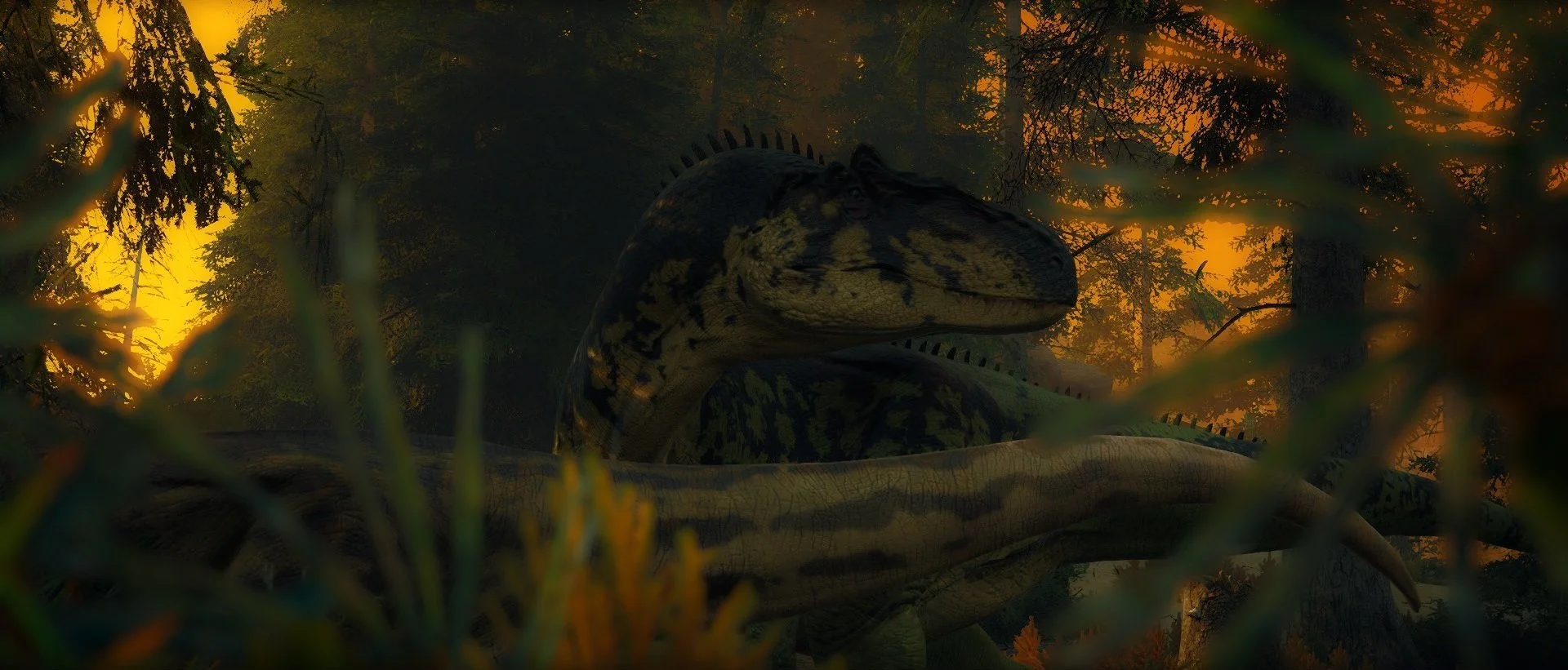Ceratosaurus
Tier: 3
Type: Terrestrial carnivore
Passive growth time: 2 hrs 44 min
Pack size: 6 sub adults/adults, 1-12 juveniles/adolescents
Hierarchy: Matriarchal
Mating bond: Ambiamorous
Nest size: 1-4 offspring per pair
Diet tags: Carnivore, cannibalistic, opportunistic, scavenger. ossivore & ovivore
Preferred food: Tier 1-4 herbivores & carnivores
Species specific rules: If they have at least 3 sub adults/adults, they can also hunt Tier 5-6 herbivores & carnivores.Behavior
Their pack dynamic is likened to that of Hyena’s, making them aggressive and bold. Females are dominant and oftentimes pick on males, which are the lowest ranking pack members. Squabbles often occur, and the matriarch will quickly put others in their place. Young are known to fight to death at times with little interference from adults. As a unit, Ceratosaurus are bullies. They will harass, pester, and aggress others from food, using numbers to intimidate even larger carnivores. They are loud and verbose.
Recommended behaviors
╸Ceratosaurus value their personal space and seldomly tolerate even their own packmates coming too close.
╸Prefers to hunt in dense forests and low visibility areas where ambushing is possible.
╸Ceratosaurus does not tolerate Metriacanthosaurus in its space at all.
╸Ceratosaurus prefers to live and nest in caves, holes and under rock formations.
Mating
Mating for Ceratosaurus is a bit backwards compared to many others. Instead of the strongest and most dominant male, a female will prefer the most submissive male. A female will approach a male aggressively as a test, should he fully submit, she will call him and the two will mate. More aggressive and pushy males will often have their advances ignored or will get outright attacked. Though males take a more hands-off role in child rearing, they will still defend them, and even let young bully them. Females are known to form favorites and may even get jealous over their favored male.
Nesting & offspring
Females will nest within the bounds of the pack. Females will help each other with hatchlings. Males are allowed near, but must remain submissive. Female hatchlings are highly aggressive and will fight each other over everything. Male chicks are often ignored by their sisters. Ceratosaurus will fiercely defend their young from threats. As the hatchlings grow, their aggression toward each other mellows out and they begin to take to bullying the adult males. Even a young female outranks an adult male.




